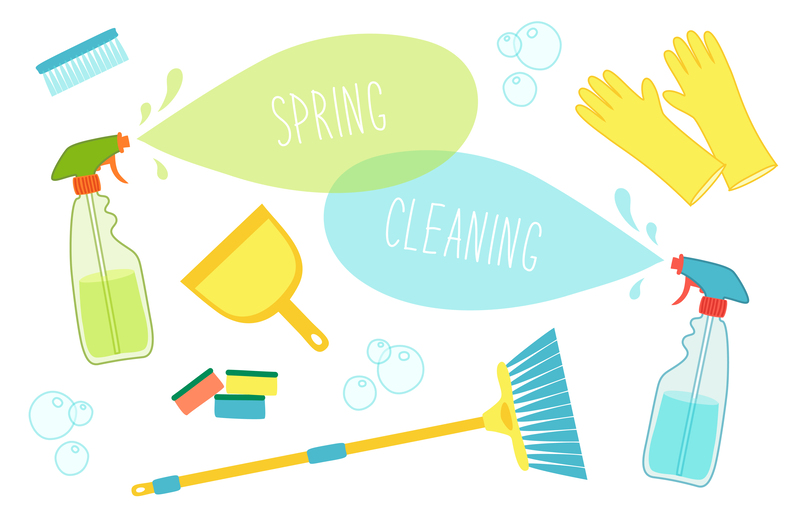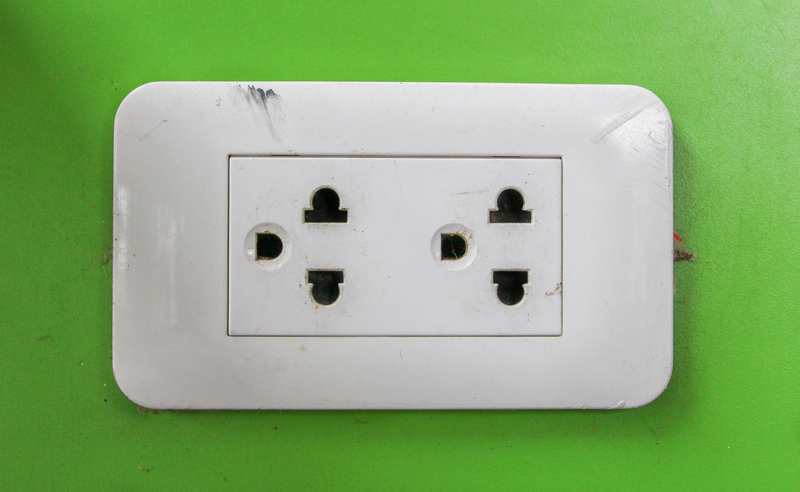Learn How to Easily Clean Burnt-on Residue Off Your Stovetop
Posted on 02/09/2025
Learn How to Easily Clean Burnt-on Residue Off Your Stovetop
Are stubborn, burnt-on residues turning your kitchen cleaning into a nightmare? If you've ever scorched soup, boiled over milk, or cooked with enthusiasm only to face a charred mess, you're definitely not alone! Burnt-on messes are among the most frustrating kitchen cleaning tasks. But don't worry - cleaning burnt-on residue off your stovetop is easier than you might think. In this guide, you'll discover simple, effective ways to restore your stovetop's shine. Let's dive in!

Understanding Burnt-on Residue and Why It's Tough to Remove
Whether you have a glass cooktop, ceramic top, electric coils, or a gas stove, burnt-on residue forms when food spills or boils over and is then subjected to repeated heat. Over time, these residues can harden and stick, making everyday cleaning ineffective. Factors that contribute to tough stovetop residue include:
- High, repeated heat that bakes the spill into a crust
- Neglecting spills until later, allowing them to dry and harden
- Using the wrong cleaners, which can spread or set stains further
Removing burnt-on residue doesn't just improve appearance - it helps your stove function properly, prevents odors, and prolongs its lifespan. Let's break down the most effective stovetop cleaning methods for all types of stoves.
The Best Ways to Clean Burnt-on Residue Off Your Stovetop
Before getting started, always check your cooktop manufacturer's care guidelines. Some abrasive tools or harsh cleaners can damage surfaces, especially glass or ceramic. For most stubborn stovetop stains, all you need are common household ingredients, a little patience, and the correct technique.
Essentials for Stovetop Cleaning
- Soft microfiber cloths or non-scratch sponges
- White vinegar
- Baking soda
- Mild dish soap
- Plastic or silicone scraper
- Spray bottle
- Paper towels
- Optional: Stove cleaner designed for your type (e.g., glass cooktop cream)
Step-by-Step Stovetop Burnt Residue Cleaning Guide
Step 1: Preparation - Make Sure the Stove is Cool
- Always allow the surface to cool completely before beginning. Cleaning a hot stovetop can cause burns and ineffective residue removal.
- Remove grates or burner covers if applicable (gas or electric coil stoves).
Step 2: Loose Debris Removal
- Use a dry cloth or paper towel to remove loose crumbs, ash, or powders first.
- This avoids rubbing loose grime into the surface during wet cleaning.
Step 3: Apply a Soaking Solution
- For light to medium residue: Mix warm water and a few drops of dish soap in a bowl. Dip a soft cloth and lay it over the burnt areas for 10-15 minutes. This soaks and loosens the residue.
- For stubborn, baked-on stains: Mix equal parts white vinegar and water in a spray bottle. Generously mist the residue. Then, apply a thick layer of baking soda over the area. The baking soda and vinegar combination produces a gentle fizz that lifts burnt residue from the surface.
Step 4: Scrubbing & Lifting Burnt-on Gunk
- After soaking, gently rub the burnt area with a soft sponge or cloth. Avoid steel wool or abrasive scouring pads on smooth surfaces (such as glass or ceramic) to prevent scratches.
- If residue remains, gently use a plastic or silicone scraper to lift it off. Hold the scraper at a low angle and slide it under the residue - never use sharp knives, razor blades, or metal scrapers unless your stovetop manufacturer explicitly says they are safe.
- For electric coil burners, you can carefully use a brush to dislodge burnt food, then wipe with a damp sponge.
Step 5: Rinse and Wipe Clean
- Wipe down the stove with a clean, damp microfiber cloth to remove lifted debris, baking soda residue, or leftover vinegar scent.
- For glass and ceramic tops, finish with a dry cloth to prevent streaks.
Step 6: Polish and Reassemble
- If you use a glass cooktop cream or cleaner, now is the time to apply it following the product instructions.
- Buff with a clean, dry cloth for a sparkling finish.
- Replace grates and burner covers when the surface is dry.
Special Tips for Cleaning Different Types of Stovetops
How to Clean Burnt-on Residue from a Glass Stovetop
- Always use non-abrasive tools (microfiber, soft sponge, plastic scraper).
- Baking soda and vinegar paste is particularly effective.
- If mineral deposits remain, a bit of lemon juice can help cut through them.
How to Clean Burnt-on Residue from a Gas Stove
- Remove burner grates and soak them in warm, soapy water for 20-30 minutes.
- Scrub with a soft brush, rinse, and dry thoroughly before replacing.
- Use a toothbrush or small brush to clean crevices around the burners.
- On the stovetop surface, follow the vinegar and baking soda method, then rinse clean.
How to Clean Burnt-on Residue from an Electric Coil Stove
- Remove coils if possible (consult your manual).
- Wipe the drip pans beneath burners after soaking in warm, soapy water and scraping off charred spots.
- Never submerge electrical parts in water; instead, wipe with a damp cloth.
- Use the paste-and-scraper method for the stove top itself.
Preventing Burnt-on Residue: Maintenance & Habits
To keep your stovetop shining and simplify future cleaning, follow these stovetop maintenance tips:
- Wipe up spills promptly: The sooner you address a spill, the less likely it will burn on.
- Use spill catchers: Place a silicone or foil liner under burners or drip pans for easy cleanup.
- Maintain regular cleaning: Give your stovetop a quick wipe after each use, not just weekly.
- Cook with the right cookware size: Oversized pots often spill over; use pans that fit burners properly to reduce risk of messes.
- Don't use abrasive tools: They can cause micro-scratches that trap grease and food, making residues worse over time.
Homemade vs Commercial Cleaners: What's Best for Burnt Stovetops?
Home remedies using baking soda, vinegar, and dish soap are safe, effective, and inexpensive for cleaning burnt stovetops. However, some situations call for commercial stove cleaners, such as:
- Heavy, repeated burnt-on crusts that resist soaking and scrubbing.
- Water stains or discoloration from hard water mineral deposits.
- Manufacturer recommendations for maintaining warranties, especially with high-end or specialty stovetops.
When using commercial products, always read the instructions and test on a small area first. Avoid bleach and ammonia-based cleaners unless your manufacturer specifically approves them, as they may damage glass and ceramic.
FAQs: Burnt-on Residue Removal from Stovetops
1. How often should I deep clean my stovetop?
For best results, give your stovetop a quick wipe after each use, with a deeper cleaning once a week or anytime you notice burnt-on residue forming.
2. Can I use steel wool or magic erasers for burnt-on gunk?
Steel wool is too abrasive for most surfaces, especially glass and ceramic. Magic erasers may work in some cases, but test on a hidden spot as they can cause dullness or micro-scratches.
3. What if burnt-on residue doesn't come off?
Repeat the soaking and gentle scraping steps, or try a dedicated cooktop cleaner. In rare cases, older burnt stains may remain - preventing new buildup is key as some cosmetic marks are sadly permanent.

Conclusion: Sparkling Stovetop Success!
Now that you know how to easily clean burnt-on residue off your stovetop, kitchen disasters don't have to spell doom for your appliances! With the right supplies and a bit of patience, you can restore your stovetop to its former glory, free of stains and tough gunk. Remember:
- Act quickly on spills to avoid future messes.
- Use non-abrasive tools to prevent scratches and damage.
- Keep up regular cleaning habits for lasting shine and efficient cooking.
Follow these tips and methods, and you'll find it much easier to clean burnt-on residue off your stovetop--leaving you more time to enjoy delicious, home-cooked meals in a spotless kitchen!





